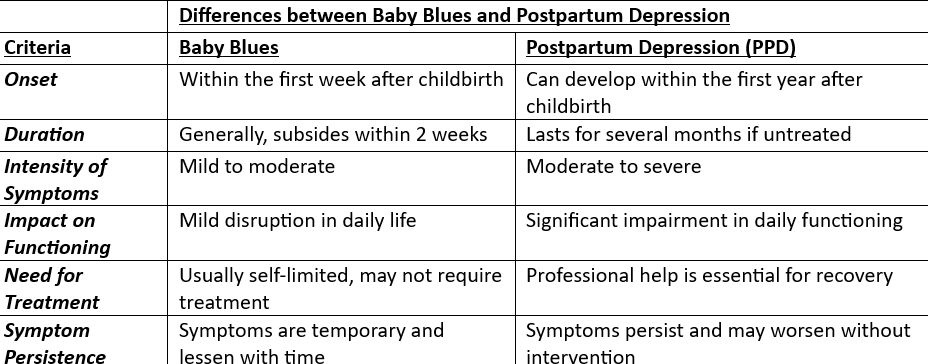
Bringing a new little life into the world is a seriously deep and game-changing experience for moms, and can result in baby blues or even postpartum depression.
The period following childbirth, known as the postpartum period, can be accompanied by a range of emotions, some of which may not be as joyous as expected. It’s important to understand the distinctions between common emotional responses such as baby blues and more serious conditions like postpartum depression (PPD). Recognizing the differences and knowing when to seek help can make a significant difference in a mother’s well-being during this crucial time.
Baby Blues: A Common and Temporary Experience
Baby blues, also known as postpartum blues, refers to a relatively common and short-lived emotional state experienced by many new mothers. This condition is characterized by mood swings, tearfulness, anxiety, and feelings of sadness or feeling overwhelmed within the first two weeks after giving birth. Hormonal fluctuations, sleep deprivation, and the adjustment to a new role as a parent can contribute to the development of baby blues.
Signs of Baby Blues:
- Mood swings
- Tearfulness
- Irritability
- Anxiety
- Sadness
- Fatigue
- Trouble sleeping
- Overwhelm
- Difficulty concentrating
Duration: Baby blues typically peak around the third to fifth day after childbirth and generally subside within two weeks.
Management: Rest, support from loved ones, adequate sleep, and self-care can help alleviate baby blues symptoms.
Postpartum Depression: A Deeper and Prolonged Condition
Postpartum depression is a more severe and longer-lasting condition that can develop in the weeks or months after childbirth. Unlike baby blues, PPD involves a more persistent and intense range of symptoms that can significantly impact a mother’s ability to care for herself and her baby.
Signs of Postpartum Depression:
General sadness
- Extreme mood swings
- Intense irritability and anger
- Overwhelming fatigue
- Severe anxiety and panic attacks
- Feelings of worthlessness or guilt
- Loss of interest in activities
- Changes in appetite and weight
- Trouble bonding with the baby
- Thoughts of self-harm or harming the baby
Duration: PPD can occur anytime within the first year after childbirth and may last for several months if left untreated.
Management: Treatment may include therapy, counseling, support groups, and in some cases, medication prescribed by a doctor.

When to Seek Help
While the emotional ups and downs following childbirth are natural, it’s essential to differentiate between baby blues and postpartum depression. Understanding the signs, seeking appropriate help, and providing a supportive environment can make a world of difference for mothers during this life-changing period.
If you or someone you know is experiencing symptoms beyond the typical baby blues, it’s important to seek help. Postpartum depression is a treatable condition, and early intervention can lead to a faster and more complete recovery. Don’t hesitate to reach out to our OB/GYNs.
We are here to help and guide you to the solutions best for your unique situation. Sometimes that may include seeing a therapist, counselor, or support group specializing in postpartum mental health. Remember, seeking help is a sign of strength and a crucial step toward ensuring the well-being of both the mother and her baby.
Call us today at 770.720.7733 or schedule an appointment online at our Woodstock or Canton location.


